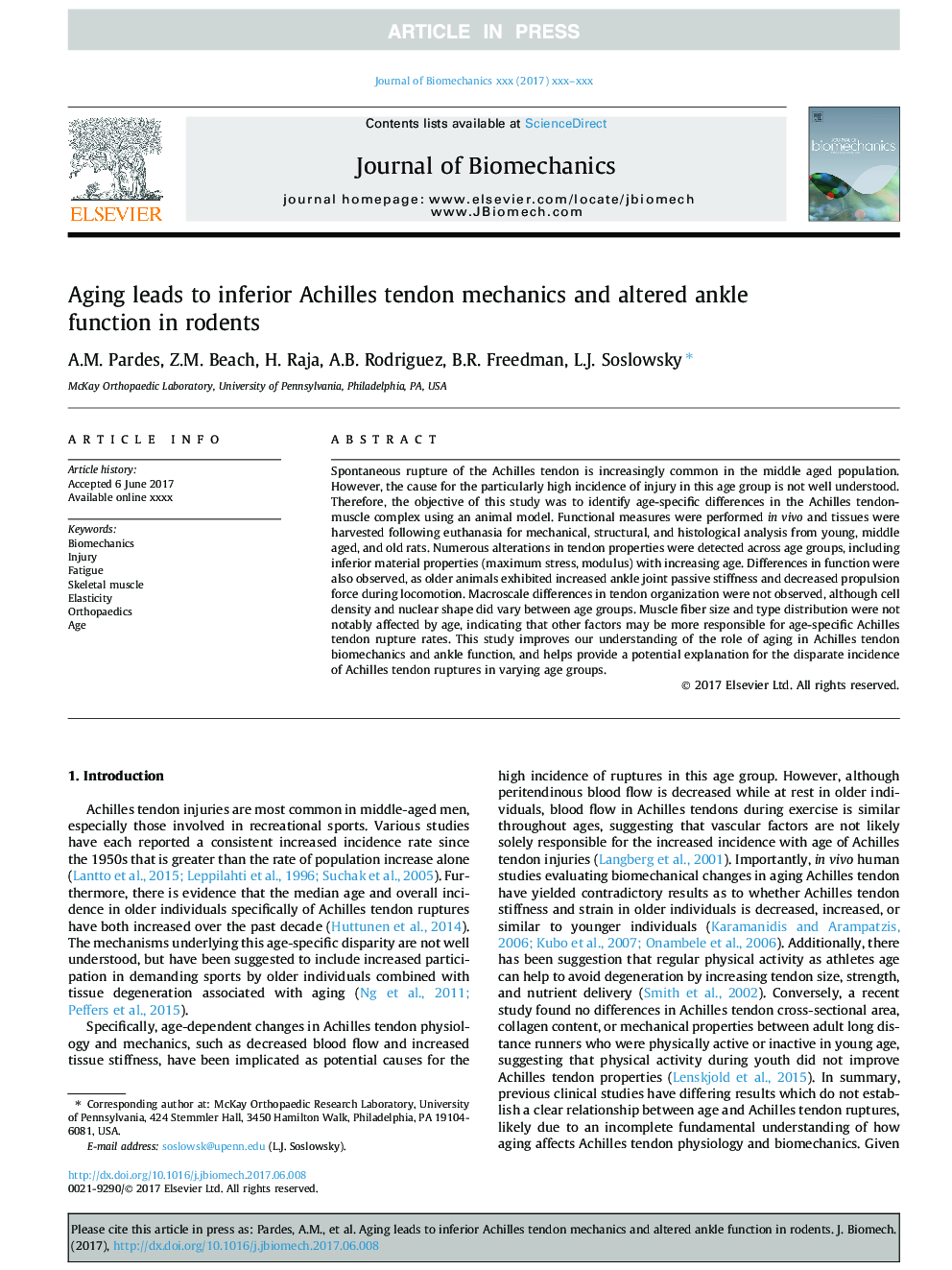| Article ID | Journal | Published Year | Pages | File Type |
|---|---|---|---|---|
| 5031951 | Journal of Biomechanics | 2017 | 9 Pages |
Abstract
Spontaneous rupture of the Achilles tendon is increasingly common in the middle aged population. However, the cause for the particularly high incidence of injury in this age group is not well understood. Therefore, the objective of this study was to identify age-specific differences in the Achilles tendon-muscle complex using an animal model. Functional measures were performed in vivo and tissues were harvested following euthanasia for mechanical, structural, and histological analysis from young, middle aged, and old rats. Numerous alterations in tendon properties were detected across age groups, including inferior material properties (maximum stress, modulus) with increasing age. Differences in function were also observed, as older animals exhibited increased ankle joint passive stiffness and decreased propulsion force during locomotion. Macroscale differences in tendon organization were not observed, although cell density and nuclear shape did vary between age groups. Muscle fiber size and type distribution were not notably affected by age, indicating that other factors may be more responsible for age-specific Achilles tendon rupture rates. This study improves our understanding of the role of aging in Achilles tendon biomechanics and ankle function, and helps provide a potential explanation for the disparate incidence of Achilles tendon ruptures in varying age groups.
Related Topics
Physical Sciences and Engineering
Engineering
Biomedical Engineering
Authors
A.M. Pardes, Z.M. Beach, H. Raja, A.B. Rodriguez, B.R. Freedman, L.J. Soslowsky,
